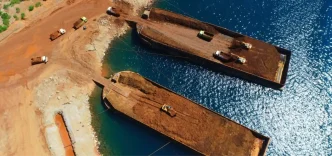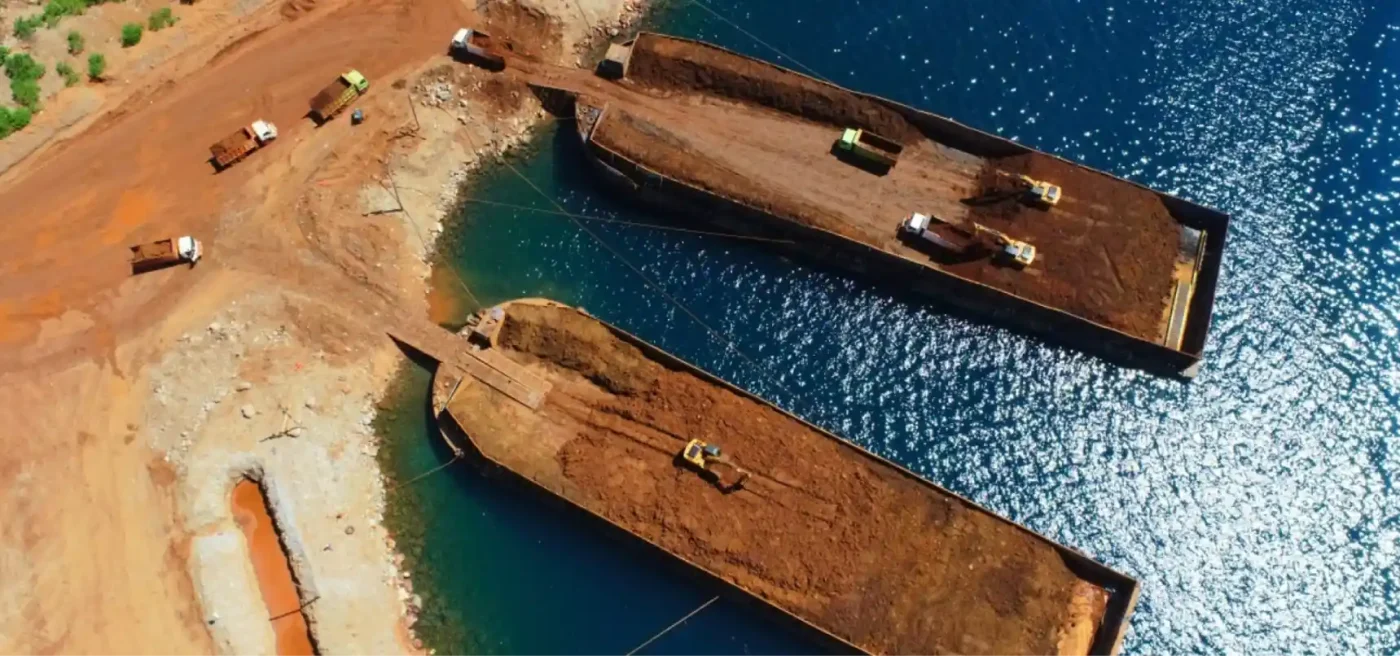The Indonesian government has taken decisive action against illegal mining in Raja Ampat, a Unesco Global Geopark renowned for its marine biodiversity, by revoking the business licences of four nickel mining companies. The move, announced on June 10, 2025, follows revelations of permit violations and environmental degradation in this ecologically sensitive region of Southwest Papua province. Yet, as international and local voices demand a complete ban on mining in the area, questions linger over whether these measures go far enough to protect one of the world’s most biodiverse marine ecosystems.
Crackdown on Illegal Operations
On June 10, Indonesia’s Energy and Mineral Resources Minister Bahlil Lahadalia confirmed the revocation of licences for four nickel mining companies operating on small islands within Raja Ampat. The companies—PT Anugerah Surya Pratama, PT Kawei Sejahtera Mining, PT Mulia Raymond Perkasa, and PT Nurham—were found to have breached regulations related to Forest Area Utilisation Approvals, known as PPKH permits. These permits stipulate strict conditions for forest use, including mandatory replanting of affected areas, a requirement some of these firms allegedly ignored.
Minister Bahlil, speaking after a meeting with President Prabowo Subianto, noted that the companies were in the early exploration stage, scouting for nickel deposits. Specific violations included operating without proper environmental and wastewater management systems, as in the case of PT Anugerah Surya Pratama on Manuran Island, and exceeding permitted forest areas, as with PT Kawei Sejahtera Mining. PT Mulia Raymond Perkasa lacked a PPKH permit entirely.
A fifth company, PT Gag Nikel, a subsidiary of the state-controlled Aneka Tambang, was allowed to continue operations on Gag Island despite public pressure for a shutdown. Having progressed to production stages involving smelting and refining, the firm was ordered to halt temporarily on June 5 but was permitted to resume after consultations with stakeholders. “President Prabowo has paid special attention to Raja Ampat and exerts serious efforts to keep Raja Ampat a world tourism spot” said Mr. Bahlil during a press conference on June 10.
Environmental Stakes in Raja Ampat
Raja Ampat, an archipelago of over 1,500 islets in West Papua, is a crown jewel of global biodiversity. Recognized as a Unesco Global Geopark, it forms part of the Coral Triangle, a marine region spanning six Southeast Asian and Pacific nations that harbors over 500 coral species and 1,400 fish species. Its turquoise waters and vibrant reefs draw divers and ecotourists worldwide, making it a vital asset for Indonesia’s tourism economy.
Yet, beneath this pristine facade, mining activities threaten irreversible damage. A June 3 report by Greenpeace highlighted the destruction of over 500 hectares of forest and vegetation on islands like Gag, Kawe, and Manuran due to nickel exploitation. Sedimentation along coastlines, a byproduct of mining, risks smothering coral reefs and disrupting the delicate marine ecosystem. Environmental experts warn that continued extractive activities could lead to the extinction of unique flora and fauna, potentially jeopardizing Raja Ampat’s Unesco status.
“Any mining anywhere produces environmental pollution. In Raja Ampat, there is so much at stake—natural forest, very rare flora and fauna” said Dr. Fahmy Radhi, an energy economist at the University of Gadjah Mada, in an interview with The Straits Times. Dr. Radhi, a former ministerial adviser, joined a chorus of voices advocating for a total ban on mining in the region, arguing that partial measures fall short of safeguarding this irreplaceable ecosystem.
Legal Loopholes and Local Impacts
Indonesia’s 2014 Coastal Areas and Small Islands Management Law prohibits mining on islands smaller than 2,000 square kilometers, a category that includes most of Raja Ampat’s islets. However, exemptions are granted to companies that can demonstrate minimal environmental impact on marine ecosystems, mangroves, and conservation zones. Critics argue that the issuance of permits to the now-sanctioned companies raises questions about oversight and enforcement, especially as some received approvals as far back as 2013.
During his June 10 press conference, Minister Bahlil sidestepped queries about why these permits were initially granted. Meanwhile, on a June 5 visit to affected islands, he claimed mining sites were “quite a distance away” from key tourist spots like the Karst of Piaynemo and showed no visible impact. He also cited local support for mining due to job creation, a point contested by environmentalists who note that pollution can spread far beyond a 30- to 40-kilometer radius through air and water channels.
Maritime affairs expert Marcellus Hakeng Jayawibawa cautioned that unresolved mining issues could strip Raja Ampat of its Unesco designation, a blow to both national pride and economic prospects. Public sentiment, amplified on social media under hashtags like #saverajaampat, reflects growing frustration. A widely shared video of young boys from the region lamenting the loss of clear seas and birdsong captured the emotional toll, with one child pleading, “Now, the earth is scarred, the sea has turned murky brown, and the birds’ songs are slowly fading. All of this is sacrificed for mining and money”.
Nickel’s Role in Indonesia’s Economy
Indonesia is the world’s largest producer of nickel, a critical component in stainless steel and electric vehicle batteries. The commodity’s strategic importance has driven aggressive mining expansion, often at the expense of environmental safeguards. Raja Ampat’s nickel deposits, while modest compared to larger sites in Sulawesi, represent a microcosm of the broader tension between economic development and conservation.
The decision to allow PT Gag Nikel to resume operations, despite public outcry, underscores this balancing act. The government’s rationale—consultation with local leaders and strict monitoring of waste and air pollution—suggests an attempt to mitigate rather than eliminate mining’s footprint. Yet, environmentalists argue that even tightly regulated operations pose inherent risks to fragile ecosystems like Raja Ampat’s, where a single spill or sediment surge could have cascading effects.
Greenpeace forest campaigner Iqbal Damanik emphasized the scale of destruction already underway, pointing to the group’s findings of widespread deforestation and coastal sedimentation. “We appreciate President Prabowo Subianto’s firm act to shut those companies’ operations, but more should be done” echoed Dr. Radhi, reflecting a consensus among activists that only a comprehensive ban can avert long-term harm.
Global Implications and Future Challenges
Raja Ampat’s plight resonates beyond Indonesia, highlighting the global challenge of balancing resource extraction with biodiversity preservation. The Coral Triangle, often dubbed the “Amazon of the seas,” supports millions of livelihoods across six nations through fishing and tourism. Damage to Raja Ampat could ripple through this interconnected ecosystem, affecting neighboring countries and undermining international conservation efforts.
President Prabowo’s administration faces mounting pressure to align with Unesco’s conservation mandates while addressing domestic economic priorities. The revocation of four licences signals a step toward accountability, but the continued operation of PT Gag Nikel and other firms in the region suggests a reluctance to fully close the door on mining. If unaddressed, experts warn, historical impacts from operations dating back over a decade could compound, leaving scars on Raja Ampat’s landscape and reputation.
Public outrage, fueled by viral social media campaigns, may yet tip the scales. As images of scarred islands and murky waters circulate online, the hashtag #saverajaampat has become a rallying cry for Indonesians and global environmentalists alike. Whether this momentum translates into policy remains uncertain, but it underscores a growing awareness of what stands to be lost.
As Indonesia navigates this environmental crossroads, the fate of Raja Ampat hangs in the balance. Will it remain a sanctuary of biodiversity and a beacon for sustainable tourism, or will short-term economic gains cast a permanent shadow over its reefs and forests? The world watches, waiting for answers.















